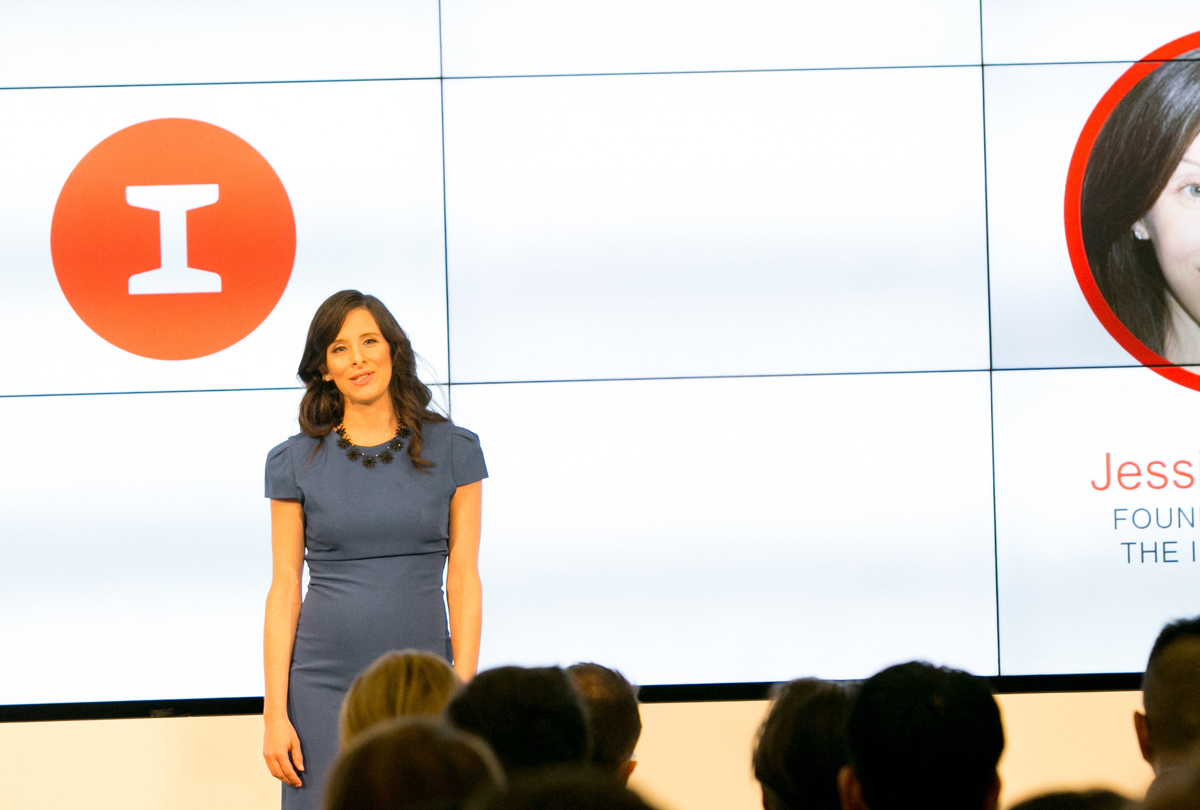When Jessica Lessin founded The Information in 2013, she was making a big bet.
Her gamble, all tidied up: Readers would pony up hundreds of dollars per year for the latest and best tech news. Rather than chasing pageviews, Lessin wagered she could build her business by providing on-the-ground reporting, scoops and savvy analysis.
Now, three years later, she’s doubling down.
On Friday, the former Wall Street Journal reporter announced that The Information is launching two new subscription tiers — a less expensive version for students and an exclusive, high-priced subscription tier for investors.
The more expensive subscriber tier, which costs $10,000 annually, will provide executives with as-yet unreported briefings through conference calls and in-person meetings. The student subscription fee will be $234 annually, down from its normal subscription price of $399.
Will this new bet on ultra-exclusive subscribers pay off? I talked to Lessin about this new strategy and asked for her thoughts about the future of subscriber-supported journalism. Our exchange is below.
Two parallel trends are making it especially tough to survive in publishing right now: Online advertising is increasingly going to the twin powerhouses of digital media, Facebook and Google. And the rise of ad-blockers means that it’s getting harder to make money on digital advertising. The Information seems insulated from those problems because of its reader-supported business model. Can you talk a little bit about how The Information is doing compared to its competitors?
Three years in, we’re cash-flow positive, growing fast and doubling down on the subscription model. We have doubled the number of subscribers we have as compared to the same time last year. The caliber of our audience remains high. The who’s who in tech, finance and media subscribe, specifically:
- Founders from 10 out of 11 of the most highly-valued tech startups in the U.S. subscribe
- Nearly half of the Forbes Midas List subscribes
- Executives from seven of the 10 biggest global media companies subscribe
The community is also increasingly active. We’ve seen a 356 percent increase in subscribers who comment on articles vs. the same time last year, and a 96 percent increase in monthly comments vs. the same time last year. Our private subscriber-only Slack team is also a highlight for subscribers. We’ve seen 96 percent growth in Slack conversations vs. six months ago.
There are currently 19 full-time team members at The Information, and we’re actively hiring for both editorial and business/engineering roles. An example of an area we’d like to start covering is biotech.
Our Asia bureau, helmed by Pulitzer-winning Shai Oster, is open for business, and we’re seeing global growth. Subscribers are from 84 countries today, as opposed to 49 countries two years ago.
Do you think the future is audience-supported journalism? In your estimation, will it vary from publisher to publisher, with the big organizations able to support themselves with national advertising, still? Or do you think it’ll be relatively consistent no matter what your scale looks like?
The big picture is that biggest tech companies are getting a greater share of digital ad dollars and that trend is going to continue; dollars will flow to the companies with the greatest data and scale. Publishers will be able to take in money via advertising but it won’t be enough to support themselves. Supply is so great that prices will remain pressured. And the ad dollars will come at a great cost, namely shifting resources into high-traffic but low value coverage areas.
Your alma mater, The Wall Street Journal, announced that it was cutting staff on the very same day you discussed The Information’s expanding footprint in Silicon Valley and elsewhere. What, if anything, do you think that says about where media’s going?
I have a great deal of respect for the Journal and the team there, so it’s always sad to hear these types of announcements. But I do think we’re seeing the inevitable realignment of the industry. Traditional publications simply don’t have cost structures that make sense.
The Information is very much a community-first organization. Events are a big focus of your business, as are comments. Why, when many publishers are ditching comments, are you turning to them to drive subscription and engagement? How would you say your attitude toward comments differs from that of other publishers? Why are you planning to put comments on the homepage, which is usually rarefied territory for publishers?
We see subscriber comments as first-class content. Our subscribers often have perspectives that vastly enrich the reporting, as many of them are leaders within technology, finance, media and beyond. By showcasing editor-selected comments on the homepage right alongside our reporting, we’re adding value for subscribers who might have read the article, but not yet seen the comments from those in the know.
I’m curious about the new offerings. The Information is moving from its single subscription offering to a three-tiered model, adding a student subscription level and a subscription level targeted at investment professionals. What drove the decision to break out of the single tier and expand your offerings?
It made a lot of sense for us these past three years to stay focused on a single subscription offering. We’re really happy with that product and the price works for a lot of people. When we thought about two important groups, however, students and investors, that equation seemed off.
Students have created some of the greatest ideas in tech, and we hear from our existing student subscribers that they love being a part of our community, but that not everyone in their position can afford The Information. We’re offering a 50 percent discount on a monthly subscription to students as long as they’re in school.
Investors, on the other hand, derive many multiples above our subscription price in value from our reporting. We heard from many in this group that they want more from us, and they want it to be limited, as that makes information inherently more valuable. With The Information Investor, we’ve created an intentionally limited way to share intel and knowledge that we gain while reporting to a smaller group at a higher price.
I’m very interested in the investor-only subscription offering. It’s exclusive and costs $10,000 per year. That price point seems very high to traditional consumers of media. I’m wondering: How did you arrive at $10,000 per year? How many subscriptions are you offering? And how will your deliver journalism differently to your $10,000 per year subscribers than you would to your $399 per year subscribers?
It’s low compared to other products targeted at this audience, which generates significant value in excess of that from our journalism already. We felt it was a good starting point since we’re still evolving the offering. The core of the offering are briefings — conference calls, in-person — that are based on information we have sourced but haven’t reported because it isn’t valuable to our entire audience. Our subscriber base is getting quite broad.
The Information has famously bet big on the importance of on-the-ground reporting. Your recently said 60 percent of your budget is devoted to editorial, and The Information trails only Bloomberg and The Wall Street Journal covering technology in the Bay Area. It plans to be the biggest on-the-ground reporting presence by this time next year. In this age of automated writing and video-centric journalism, why do you see boots on the ground as central to your business? Do you think the value of reporters writing stories will change in the next 10 years? The next 20?
Boots on the ground are critical. Sitting at a desk and waiting for a company to break news to pick it up isn’t journalism; it’s aggregation. To find the truly new and important stories, you have to go meet people and get information from them. You can’t do that without getting up from your desk and you can’t understand another market without being there. I have no doubt that the value of excellent reporters will grow as quality reporting becomes relatively more scarce as lower quality information becomes more abundant.
Any way you slice it, good information is becoming more valuable. The biggest and best companies in the world have more access to tools and sources to help them ferret out the truth. They have their own research departments, tons of data, etc. We want to bring some of those benefits to business professionals through our journalism for just $400 a year.






